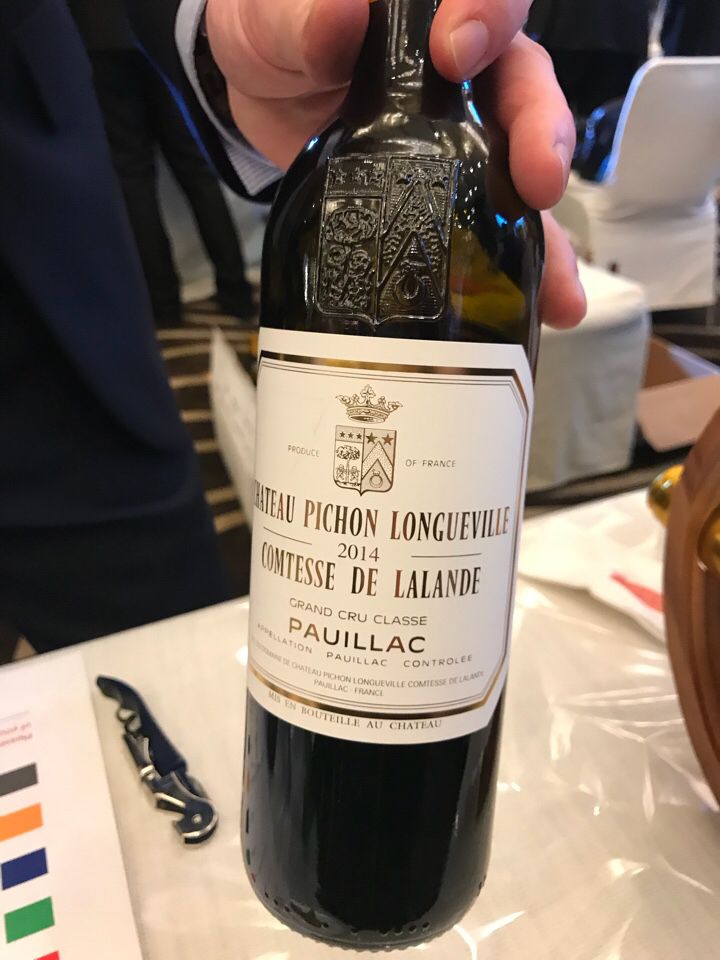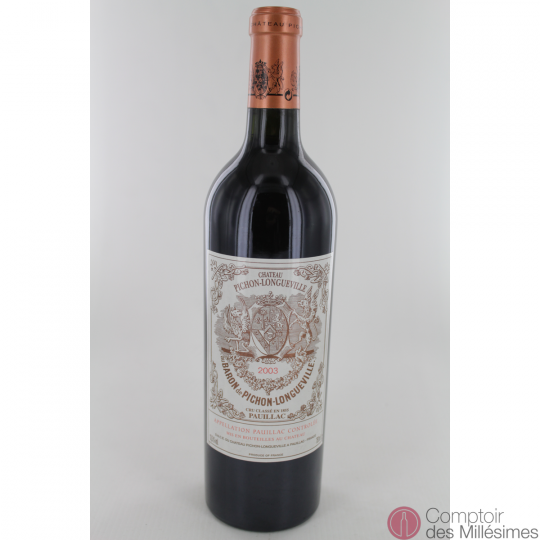
Pichon Baron was to remain with the Pichon-Longuevilles until 1933 when it was sold to the Bouteillier family.

Only on the death of Raoul in 1864 was the property physically divided and two separate wines made. Three fifths went to his daughters Sophie who became a nun, Gabrielle and Marie-Laure who married the Comte Henri de Lalande to become the Comtesse de Lalande.Įven though the ownership was legally divided the property was run as one and in the 1840s Marie-Laure built the present building of Château Pichon Comtesse de Lalande (Pichon Lalande) for her and her sisters to live in and in 1851 Raoul started the constructing of the present Pichon Longueville (Pichon Baron) château. His son Raoul inherited two fifths, his and that of his brother who had earlier died unmarried. Under the new Napoleonic inheritance laws any property had to be divided equally between all children and to avoid legal fights after his death Joseph divided the property between his children during his lifetime in the 1830s. He had five children, two sons and three daughters. The legendary Joseph de Pichon was born in 1755 and survived the terrors of the french revolution by hiding in the kitchen oven of the château for eight days and he remained to live to the ripe age of 95. The reputation of the wines grew and by the middle of the 18th century it received prices similar to those of the wines from the châteaux now known as Mouton Rothschild, Gruaud Larose, Ducru Beaucaillou and Beychevelle. His daughter, Thérèse, married Jacques de Pichon Baron de Longueville in 1694 bringing these lands, that her father had now started planting with vines, into the marriage. A few years later, knowing the quality of Château Latours wines, he acquired land nearby where now the two Pichons lie. He bought the land near Château Margaux, where now Rauzan Ségla and Gassies lie in 1661. Pierre de Masures de Rauzan, known as the "Sorcier de la Vigne", a distinguished member of the Bordeaux Parliament had early realised the value of premium wine and started to aquire vineyard land during the second half of the 17th century. During the 1980s there were signs of recovery but not at the same speed as with many other properties during this time and certainly nowhere near that of Pichon-Lalande that had prospered enormously under the care of May de Lencquesaing to become one of the first "Super-seconds".Ĭhâteau Pichon Longueville, or Pichon Baron as it is often called, is known as "the male" part of the original Pichon Longueville property that got divided in 1850, not only due to the fact that the male heir inherited this part but also because it is a more "manly" wine in character than its sister, Pichon Lalande, across the road.


His eldest son Bertrand was still young and inexperienced and there was a lack of money for necessary investments leading to a decline in quality of the wines during the 1960s and 1970s. But on the death of Jean Bouteillier in 1961 its reputation began to sink.

The reputation of Pichon Baron until the 1960s was superior to that of Pichon Lalande across the road, it was also placed above Pichon Lalande in the Classification of 1855. It is a wine that improves year after year and can age for over 40 years in the cellar. Château Pichon Baron exhibits elegance, intensity and exceptional length on the palate. Our Grand Vin Château Pichon Baron, classified as a 2nd Grand Cru Classé in 1855, is made with grapes from the oldest vines on the estate’s historic plots.This quintessential Pauillac offers an intense and profound sensory experience of great complexity.


 0 kommentar(er)
0 kommentar(er)
